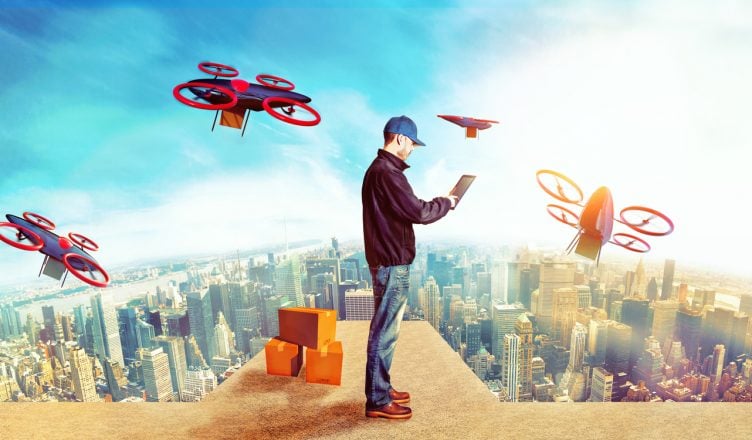Modern transportation is experiencing a paradigm shift thanks to the emerging concern for the environment, safety, and transformative transportation technologies.
Now, futuristic transport innovations promise to change everything, whether it is jam-packed public transportation, long hours of international flights, or fuel-inefficient diesel trucks giving you 20 mpg mileage. The best part is that all these new transportation technologies are closer than you realize.
Three Future Transportation Concepts and Trends
The future changes in transportation technology will depend upon new, smarter sources of energy as well as advanced technological infrastructure for supporting transport innovations.
The three broader futuristic transportation concepts and trends will be:
- Electrification
- Smart Technology (with a focus on safety)
- Autonomous Technology
As these three technologies have expanded rapidly in recent years, we can assume that they will be the major contributors to transportation in the future. We discuss these three below.
-
Electrification
The transport industry will mold itself fast in the coming years. All the large markets in the world will change their cars to more eco-friendly versions, such as electric vehicles (EVs). So, the sale of EVs will increase dramatically in the next decade.
According to a J.P. Morgan Research report, EVs and hybrid electric vehicles (HEVs) will account for 30% of all vehicle sales by 2025.
Electrification is certainly one of the most high-profile developments in the transport industry, with technology improving significantly in the last few years.
For example, before 2019, it took two Formula E cars to complete a 45-minute race, while it now takes just one car. This improvement in performance was possible with improved battery technology.
The next breakthrough in EV technology will relate to fast charging. With the next level of fast-charging technology, you’ll be able to achieve an 80% battery charge of your vehicle in just 20 minutes. Grabat graphene batteries are already able to charge and discharge 33 times faster than lithium-ion batteries.
More such developments are on the horizon. The Director of the Electrochemical Engine Center at Penn State, Chao-Yang Wang, said,
“We demonstrated that we can charge an EV in 10 minutes for a 200 to 300-mile range.”
Electric vehicles are the future and an increasing number of field service businesses in the US are turning to EVs, while setting goals to reduce their emissions and improve fleet efficiencies.
However, emission reductions and the lower cost of ownership, which are the primary benefits of EVs, are tied to the utilization rate.
If your drivers fail to properly charge plug-in hybrid electric vehicles (PHEVs) or drive in gasoline mode, EVs will neither help in saving money on fuel costs nor make a considerable impact on reducing emissions.
Also, the traditional methods that are used to record Vehicle Miles Traveled (VMT) and fuel consumption in conventional vehicles do not work well for EVs. Electric vehicles require new processes for analyzing mileage data.
The reliable solution is installing telematics with EV-specific capabilities. When placed in an electric vehicle, telematics will track data to help:
- Monitor energy consumption and energy generation
- Improve driving habits
- Monitor battery’s state of charge
- Location and booking of the next charging station.
With such telematics data in hand, field service managers can do effective route management, benchmark vehicle utilization, monitor charge reporting, and measure whether their plans are effective in reducing costs and emissions.
Learn more about why you need telematics for electric vehicles.
Want To See For Yourself How Route4Me Can Boost Your Profits?

-
Smart Technology
The commercial vehicle Original Equipment Manufacturers (OEMs) are working closely with non-automotive transportation companies to enhance safety measures of the automobiles. They are adding many technologies, including sensors and cameras, to enhance safety measures.
One such advanced technology being used is the Stoneridge MirrorEye Camera Monitor System. This camera replaces the side view mirror, enhancing the awareness and interactivity of the drivers on Class 8 trucks.
-
Autonomous Technology
Companies like Tesla, Intel, Apple, Amazon, and many new startups are working on autonomous driving technology and applications. In fact, Tesla founder, Elon Musk, has said that they are very close to achieving “level-five” automobile autonomy.
While the current “level-two” autonomy requires the driver to remain alert with his or her hands on the wheel, “level-five” automobile autonomy will require no driver input. It’ll be able to perform many autonomous functions, including steering, accelerating, and braking.
However, there are many challenges when it comes to optimizing routes for driverless vehicles.
Long-distance travel is one of the biggest challenges of autonomous vehicles for deliveries.
Also, autonomous vehicles for deliveries typically cannot fit a lot of units and will only be able to deliver three to five units at one go. So, what if you have 100 to 5,000 units and need to distribute 20,000 units? You will have a total mess.
Using autonomous vehicles for deliveries makes sense if you are delivering in the countryside or cities with low-density areas. But, what if you need to deliver during peak hours in Manhattan or Chicago? Can you imagine what a mess that could be?
Take a closer look at the challenges of optimizing routes for autonomous vehicles for deliveries and how route optimization software can help.
Three Evolving Transportation Innovations and Ideas for the Future
Below, we take a quick look at some transformative transportation technologies that are sure to impact the future of the transportation industry forever.
-
Autonomous Aerial Vehicles
Autonomous Aerial Vehicles (AAVs) are autonomous human-carrying drones that have been designed to transport passengers. They don’t need any runway because they use horizontal rotors for Vertical Take-Off and Landing (VTOL). They have already been tested and demonstrated success and the technology could become mainstream transportation much sooner than you expect.
This means that commuters will soon be able to avoid congested roadways and reach destinations faster with these future aerial transport systems.
The concept of 5G-connected urban airmobile transport is already a reality with Ehang 184, which can be controlled from a smart city command center. Also, in the 2022 FIFA World Cup in Qatar, the first Air Taxis will make their debut.
-
Hoverbikes
Hoverbikes are similar to AAVs. They come with quadcopters (four rotors) that are capable of carrying one person. A battery-powered S3 2019 Hoverbike has already been developed by a Russian company and can fly at 33 feet (10 meters) altitude. This hoverbike will cost you around $150,000.
-
The Hyperloop
Hyperloops, first envisioned by Elon Musk in 2012, will be the next big thing in public transport. It will connect cities, countries, and even continents by transporting people in capsules or pods through tubes. The pods in Hyperloops use magnetic levitation (MagLev) technology for propulsion. The high-speed technology can travel upwards of 600 mph.
A 500-meter test track called the DevLoop by Virgin Hyperloop One is already in place in Apex, Nevada. Furthermore, reports indicate that Hyperloop will soon be commissioned in different parts of the US, Canada, Mexico, the UK, and India.
Envisioning the Future of Transportation
The transportation industry is in constant flux because of fast-evolving technologies. You have to monitor the changes to keep a tab on the paradigm shift taking place.
New mobility services, such as Lyft, Uber, Zipcar, and Car2Go, as well as many other public transportation services, are now available. To accommodate the coming transportation industrial revolution, many auto manufacturers are investing heavily in mobility research and development.
Lukas Neckermann, a well-known transportation author and speaker says that the upcoming “mobility revolution” will be based on three zeroes:
- Zero emissions
- Zero accidents
- Zero ownership
Smartphones are going to be the most powerful tool for mobility. Also, the next big transportation revolution will become reality on the basis of three major technological advancements, namely Big Data, IoT, and zero-emission technologies.
The early conceptualizations and prototypes say that exciting times are ahead in the future of the transportation industry.
What do you think? Which futuristic transportation innovations will dominate the coming years?
To learn more visit www.route4me.com.
Want To See For Yourself How Route4Me Can Boost Your Profits?





